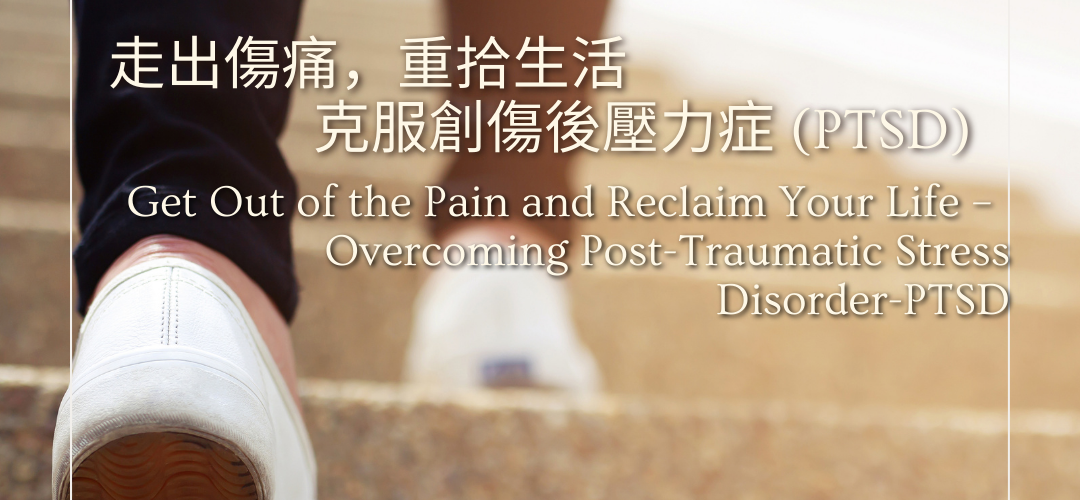Life has its ups and downs. But some difficulties and pain can become traumatic if one cannot forget them, shake them off, get out and let go of them, and eventually, one can become emotionally ill. If a traumatic experience constantly lives again and continuously repeats its discomfort, that is Post-Traumatic Stress Disorder (PTSD).
As its name suggests, Post-Traumatic Stress Disorder (PTSD) is related to trauma.
The general public has the impression that these traumas are about serious accidents in life, such as tsunamis, earthquakes, wars, car accidents, physical abuses, or other accidents. Going through enormous changes is often a common cause of post-traumatic stress disorder. But the fact is that the “trauma” developing into PTSD is not dependent on its catastrophic levels or its timing. The “traumatic events” can be happened far or near, big or small. In foreign countries, there have been cases who suffered from PTSD even without involving themselves in the actual accidents but only by learning about them on the news. Other patients suffer trauma only because they are criticized at work by their bosses or colleagues. Therefore, post-traumatic stress disorder may develop from any form of adversity in life.
While there might be no distinction between one trauma to another, what is in common is that they all make patients feel very uncomfortable. The apparent feelings are unsafe, stress, anxiety, and threats. There is also no prominent patient group for post-traumatic stress disorder. Men, women, and children of all ages can have it. But if one must say so, the proportion of women is usually higher, just like other emotional disorders.
Intrusive symptoms of post-traumatic stress disorder mostly appear within one month after the event.
The invasive symptoms are demanding and tiring. Patients will experience involuntary flashbacks, recalling that traumatic episode. It is always possible to flash uncomfortable images frequently and realistically, regardless of time and space. It is conceivable what impact it will have on daily life, in social or work situations.
And this is not only during the day. In the night and dreams, those memories are recurrently replayed, just like a skipped record rerunning the same tune, making it impossible for the patient to sleep. All day and night, it is like a nightmare for someone with PTSD.
Some patients hope to relieve their pain, so they deliberately avoid sleep and try not to connect with their thoughts. But they then developed insomnia, loss of appetite, and other physical problems. And because the more they avoid, the more anxious they become, and they are becoming sensitive to the sounds and people around them. Each moment is as fearful as a frightened bird, and so physically, there are often symptoms such as palpitations, headaches, breathlessness, and muscle tension.
Living with PTSD is tough. However, there are treatments for it. Today psychiatrists generally apply medication and psychotherapy to assist patients. Medically, antidepressants and antistress medications help patients to relax, thus relieving anxiety. In terms of psychotherapy, there is Eye Movement Desensitization and Reprocessing (EMDR). This therapy reorganizes the negative emotions embedded in the brain through eye movements. There is also psychological counseling, which allows patients to expose their fearful thoughts during the treatment. The purpose is to help patients understand that past events will only stay in the past and will not happen again, doing any harm to the present, so thus the patients are relieved.
However, the pathway in PTSD treatment can be long and iterative. In particular, in some cases, patients still need to face the aftermath of related events, such as lawsuits after accidents or trauma at a specific festival, in the same season bringing back the pain. These kinds of situations will make longer the road to healing.
It’s long, but there will be an end. For those close to the patient, family members, friends, and lovers, your determination to walk together is necessary, and always understand that everyone’s feelings are different. A piece of paper in our eyes can be a knife to patients who live under severe stress.
Unfortunately, trauma has happened, and we cannot rewrite history. But we can understand that the past is in the past, not the present or future. We can let the patients understand it, accept it, and let it go. There will come a time when patients can walk out of the nightmare of PTSD and reclaim their current lives.
For more information about mental health, please visit Mental Health Foundation Information Platform
eplatform.hkmhf.org
Special Thanks
Jebsen Group Charitable Fund, Sponsor
Dr. Lum Choong Kein, Psychiatrist


